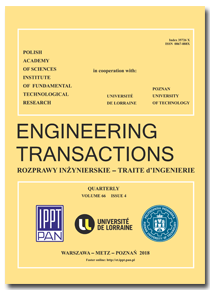10.24423/engtrans.118.2012
Impact Behaviour of the Japanese Sword
References
Sato K., The Japanese Sword – A Comprehensive guide, Kodansha International, Tokyo, 1983.
Kapp L., Kapp H., Yoshihara Y., The Craft of the Japanese Sword, Kodansha International, Tokyo, 1987.
Suzuki T., Traditional Technology of Making Japanese Swords [in Japanese], Rikougakusya, 1994.
Dodd B., The Making of Old Japanese Swords, Journal of Mechanical Working Technology, 2, 75–84, 1978.
The Society for Preservation of Japanese Art Swords; http://www.touken.or.jp/
Fujiwara H., Hanabusa T., Tanaka K., Scientific research of Japanese sword – its curvature (sori) and residual stresses, Proc. 3rd Inter. Conf. Residual Stresses, 2, 1537–1542, 1991.
Inoue T., Uehara T., Nakano Y., Metallo-Thermo-Mechanical Simulation of Quenching and Tempering of Japanese Sword, Proc. of 5th Inter. Symposium on Plasticity and its Current Applications, July 17–21, 1995, Sakai-Osaka, pp. 697–700.
Inoue T., The Japanese Sword – Materials, Forging and Simulation of Quenching [in Japanese], Materia Japan, 35, 2, 174–178, 1996.
Daimaruya M., Impact Response of the Japanese Sword Model [in Japanese], Inspection Engineering, 11, 5, 12–16, 2006.
Daimaruya M., Kobayashi H., Fujiki H., Impact Response of a Model of the Japanese Sword with Sori [in Japanese], Proc. of 2006 Annual Meeting of JSME/MMD, pp. 149–150, 2006.
Daimaruya M., Kobayashi H. Bustami S., Chiba M., Impact Tensile Strength and Fracture of Plaster Material, J. Japan Soc. Str. Fracture Mats., 30, 1, 1–24, 1996.
DOI: 10.24423/engtrans.118.2012




